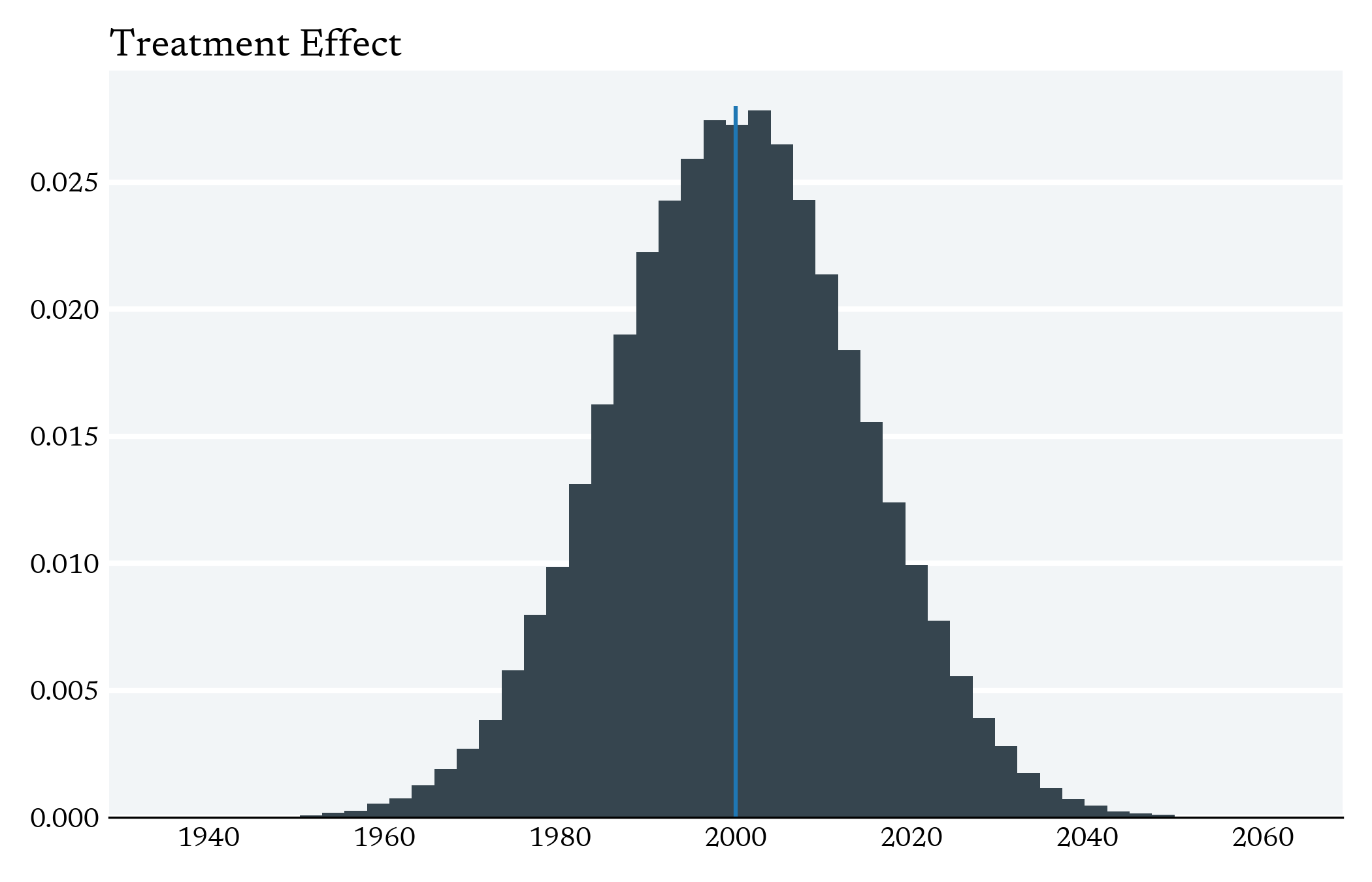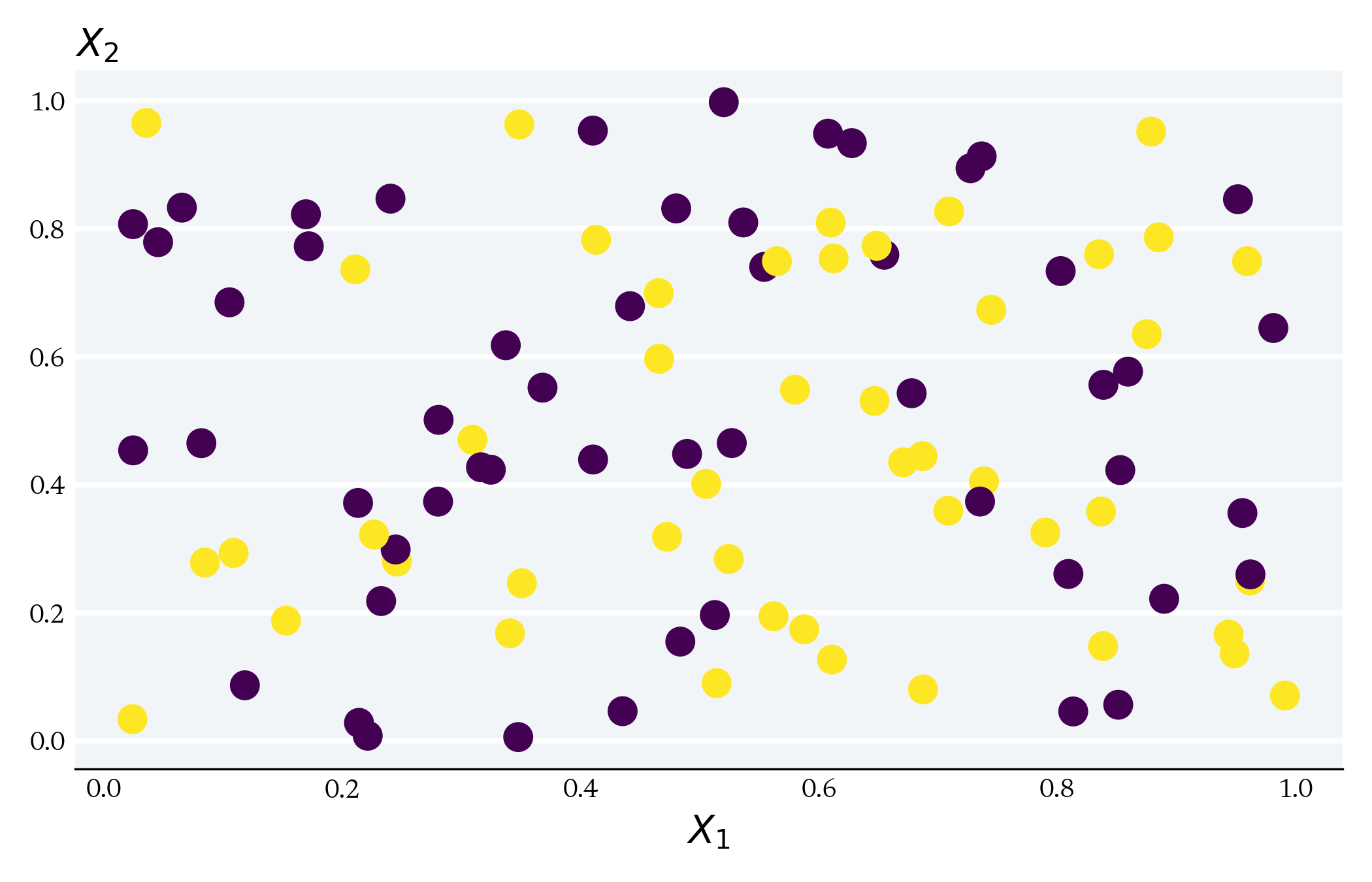Causal Inference
Business Analytics
Motivation
We all intuitively understand what it means for something to Cause something else




Many of the questions that we're interested in are causal in nature
- What is the impact of a remote work policy on stock price?
- What is the effect of crime rates on hotel occupancy?
- What's the impact of inflation on public education spending?
- What's the return to a private secondary education compared to a public secondary education?

Set of People
Set of Possible Data Sets


Generalize
Causal Inference as A Missing Data Problem
Context
What is the effect of taking BA222 versus the Excel Equivalent on Earnings Five Years after Graduation?
Notation
Five Year Post College Earnings if the person took BA222
Five Year Post College Earnings if the person did not take BA222
Estimand
Difference in means
Idea
Approximate the Average Treatment Effect by comparing the earnings of students who took BA222 with the earnings of those who took the Excel Equivalent
The Average Earnings for those who took BA222
The Average Earnings for those who took the excel equivalent
Difference-in-Means
Difference-in-Means
Average Treatment on the Treated
Selection Bias
Python Exercise
means = '###FILL THIS IN###'.mean()
print(f'The difference in means is: ${means.loc[1.0] - means.loc[0.0]:.0f}')Difference-in-Means
treated_df = df['###FILL THIS IN###']
ATT = treated_df['###FILL THIS IN###'].mean() - treated_df['###FILL THIS IN###'].mean()
print(ATT)Average Treatment on the Treated
means_y0 = df.groupby('###FILL THIS IN####'].mean()
selction_bias = means_y0.loc[1.0] - means_y0[0.0]
print(selction_bias)Selection Bias
The need for controls
Idea # 2
Instead of taking the difference between treated and control groups, let's average local differences between treated and control groups
Summary (thus far)
Local with respect to features/ independent variables
(1) Take difference-in-means within each group
(2) Take the average differences
Idea # 2
Let's assume we observe a Questrom Concentration
Accounting
Finance
Marketing
Real Estate
Strategy
Under what conditions is this a good idea?
Key Assumption
"Within each concentration, the decision about to take BA22 is independent of the potential outcomes"
Python Exercise
estimate = 0
variables = ['X0', 'X1', 'X2', 'X3', 'X4']
for var in variables:
df_temp = df['###FILL THIS IN###']
weight = len(df_temp) / len(df)
effect = df_temp.groupby('Treatment')['Outcome'].mean().loc[1.0] - df_temp.groupby('Treatment')['Outcome'].mean().loc[0.0]
estimate += weight*effect
print(estimate)Average Within Group Difference in Means
The curse of dimensionality
The Central Tension in Causal Inference is between local variation in Treatment and the Curse of Dimensionality

Linear Regression Models
Summary
In causal inference, we are concerned about selection bias
One idea is to include additional controls such that
The Conditional Expectation Function is central to our Framework for Estimating Causal Effects
Conditional Expectation Function
Population OLS Model
Sample OLS Model
In Class Excise
Hypothetically, let's say you wanted to estimate the impact that a specific teacher had on the average student's midterm grade.
(B) If so, which controls would you include to reduce the selection bias?
Notation
Indicator of specific teacher
Midterm grade if they didn't have that teacher
Midterm grade if they did have that teacher
(A) Are you concerned about selection bias?
Estimation Challenges
- In higher dimensions (multiple independent variables), the observations are more spread out, which makes it hard to think of taking "local" differences between treated and control
Curse of Dimensionality
- Often the variables that we would most like to control for to reduce selection bias -- maturity, ability, motivation -- don't appear in our data set
Omitted Variables
Sensitivity
We're concerned that a variable like Ability, X, is driving the selection bias
Coefficient of Interest
Not in Our Data Set
Let's say that we observe the Outcome and Treatment variable
Observed Coefficient
Coefficient of Interest
The average change in the outcome given a per unit change in the latent variable, holding treatment constant
Nuisance Parameter
The slope parameter from regressing the Treatment on the Latent Variable
Practical Perspective
At a High Level, Causal Inference doesn't work as well as we might hope
- The Gold Standard in Causal Inference is a Randomize Control Trial
- Most questions cannot be addressed via a randomized control trial
- Even questions that you may initially think can be addressed via an RCT cannot be addressed via an RCT
I don't think this is emphasized as much as it should be in introductory econometric classes (which makes sense partly, why demotive the class?!)
Example
Using only experimental variation, we cannot determine whether the use of experimental vouchers has a high long run impact (however measured) than the use of standard vouchers
Research
Credible
Important
Choice Set
What This Means:
(1) We'll have to make "Approximations"
- We'll want to learn math (perhaps more than you may like!) to be able to evaluate and think through these approximations
- This necessitates the need to move beyond learning just from data (need to learn from individuals with on the ground experience)
(2) The data alone doesn't provide a unique answer to our question
In practice, we often cannot provide guarantees for the performance of our approach under plausible assumptions
